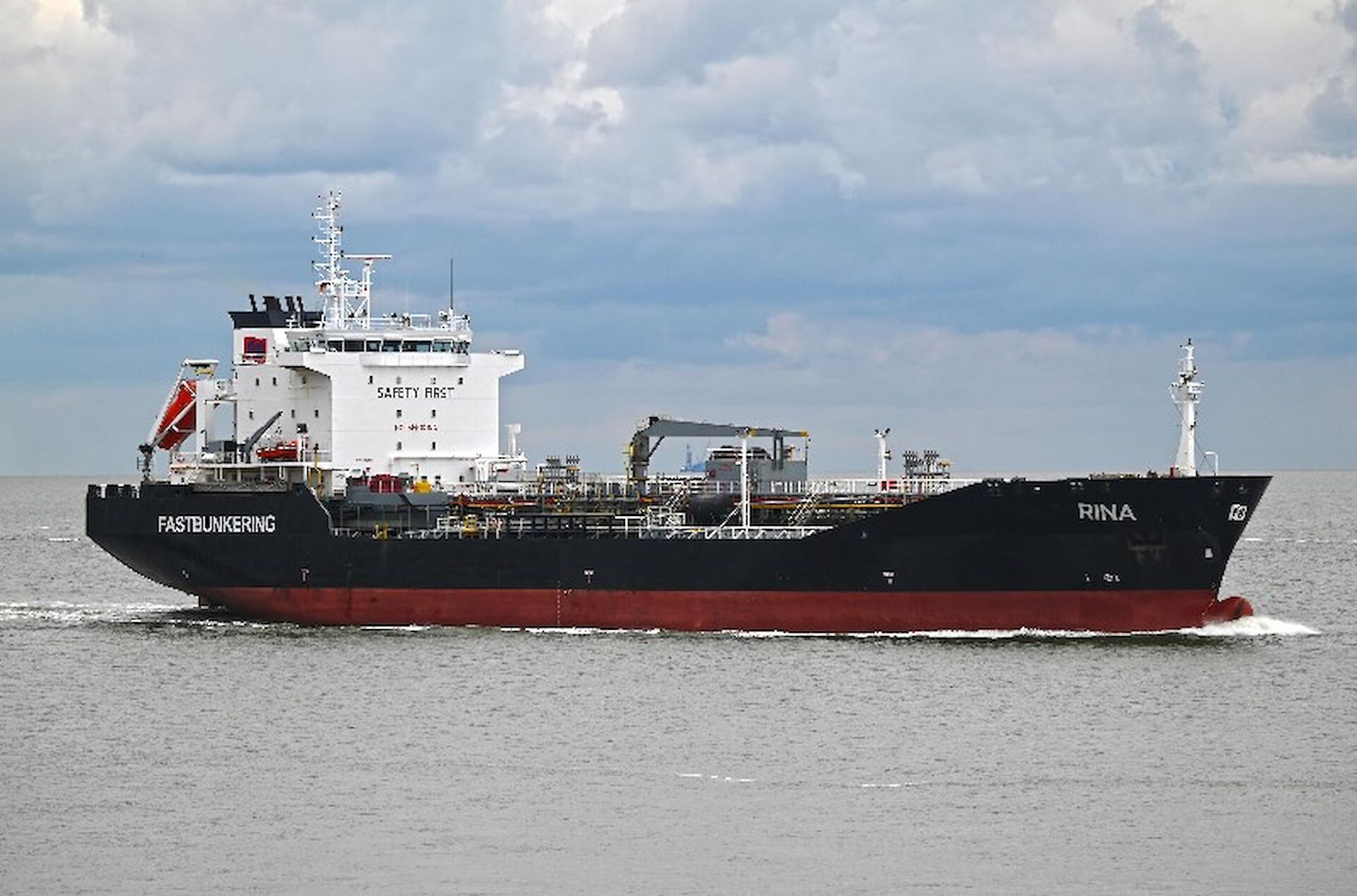
Photo: portofhamburg.com
Two bunkering (refueling) barges, Rina and Zircone, have been operating in the Baltic Sea for years, primarily in the Danish Straits. Based in the ports of Riga, Klaipėda, and Paldiski, they are servicing Russian tankers bound for Russian oil export terminals in Primorsk and Ust-Luga. From there, crude is most often shipped to India, Indonesia, and Malaysia, The Maritime Executive reports. Since the start of Russia’s full-scale invasion of Ukraine in 2022, most of these barges’ clients have been tankers belonging to Russia’s “shadow fleet” made up of vessels that sail under constantly changing flags while frequently altering their names.
Between June 2024 and March 2025, Rina and Zircone reportedly carried out bunkering operations for 286 vessels. More than 160 of those tankers visited Primorsk and Ust-Luga either before or after contact with the bunkering barges. Several of these tankers, including Blue and Rainbow, were later sanctioned, though they were not under restrictions at the time of refueling. However, as the publication notes, their regular calls at Russia’s oil export terminals should have raised concerns with the authorities tasked with monitoring sanctions compliance.
After Rina and Zircone drew media attention, their ownership changed several times, eventually transferring to a Dubai-registered company, FB Trade DWC-LLC. Both barges continue to operate in the Baltic. In addition, FB Trade manages the tanker Onyx 2, which conducts bunkering operations in the Gulf of Oman from ports such as Khor Fakkan — a traditional transshipment hub for the Russian and Iranian “shadow fleets.”
The Maritime Executive emphasizes that Estonia and Latvia are among the countries most actively opposing Russian aggression, yet they have failed to halt the operations of these vessels. Denmark and Sweden, which have also taken steps to pressure Russia, have likewise been unable to curb “shadow fleet”-related activities in their waters.
Analyst Mark Douglas of Starboard Maritime Intelligence detailed possible solutions to the problem in a comment to The Insider:
“[For the Baltic states,] there are options to conduct port state inspections to find any issues with the vessel and the way it is operating, including holding all the correct insurance and paperwork for the fuel they’ve transferred. Or they could try and restrict the supply of fuel to the vessels, although that would be difficult. Both vessels are flagged in Cyprus, so they could raise it with that government. Or the countries that have sanctioned the ‘shadow tankers’ involved could look into sanctioning the bunker tankers. For instance, the U.S. has sanctioned tug boats that had been assisting with ship-to-ship transfers in Southeast Asia.”
Regarding the need for “shadow fleet” vessels to refuel in Baltic waters rather than in nearby Russian ports where they are loaded, the analyst noted:
“Some tankers can burn cargo oil in their main engines, so they don’t need to refuel. Others do need to refuel, and if you’re in port loading, it would make sense to load bunker at the same time. But there are still tankers spoofing locations to pretend they’re not going into Russian ports, and for those vessels refueling outside Russian waters might help hide their activities.”